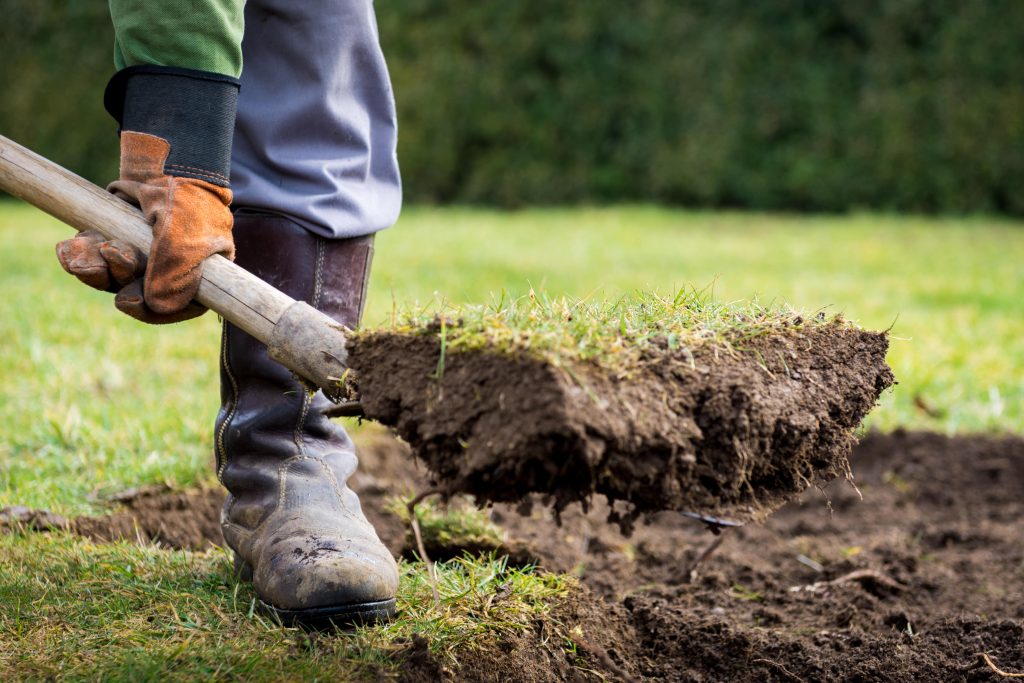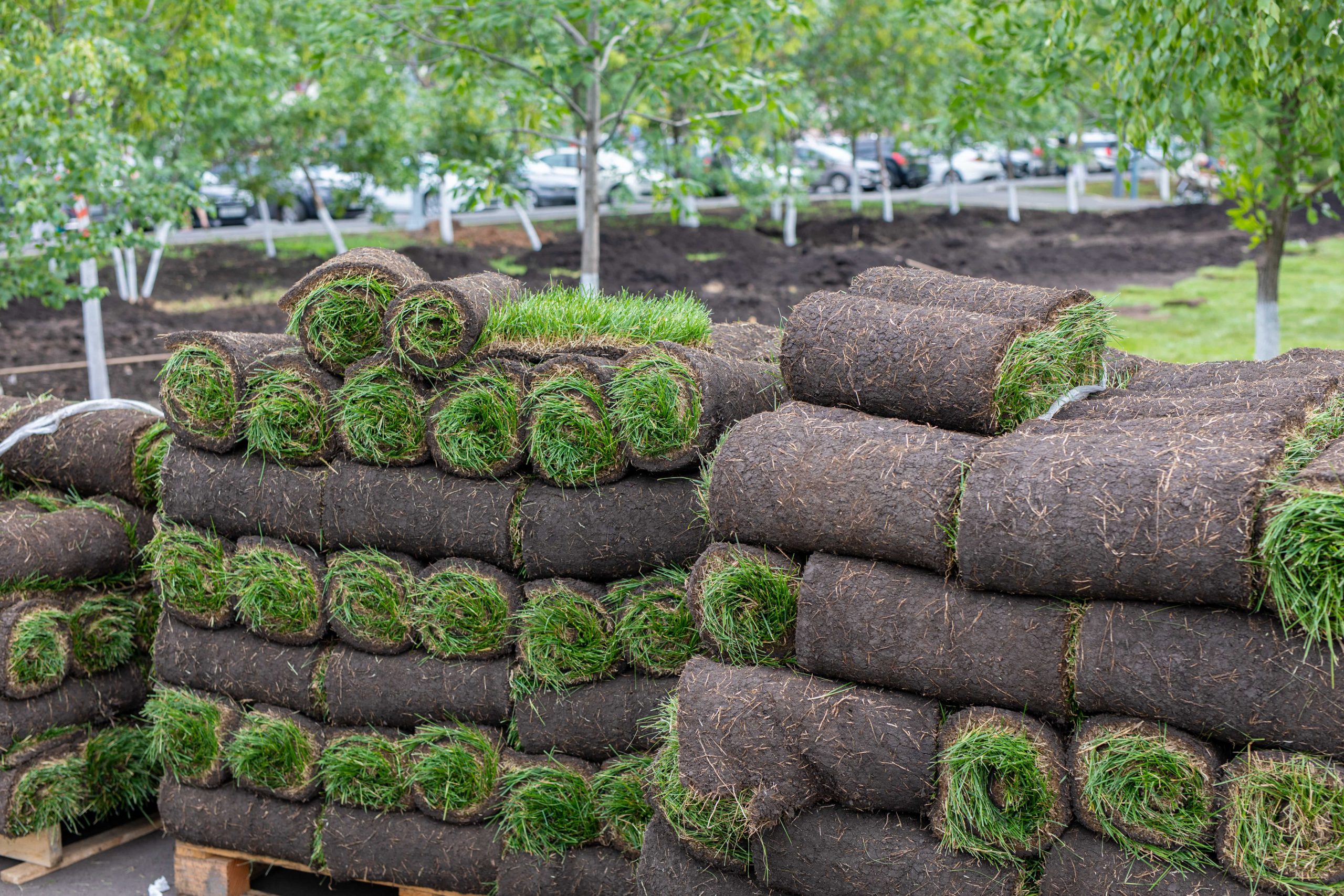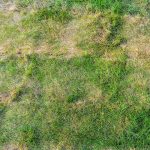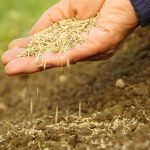If your lawn is patchy or has gone brown in areas, you might be considering laying new turf on top of it, to make your grass look nice again.
In this guide, we’ll explain how to lay turf on existing grass, and give your sod the best chance of growing well.
But first, we’ll discuss some of the issues with doing this that you should know about.
The issues with laying turf on existing grass

Most people say to avoid laying new turf on top of existing grass.
The main reason for this is that doing so makes the sod quite unlikely to survive very long, and can cause a number of other issues.
Although it might look great initially, chances are it will begin to look just as bad as your existing lawn after a month or so. This is because:
- The roots of your new turf will struggle to reach the soil. They will have a hard time growing through the existing grass.
- Existing lawn diseases, such as fungal infections, will spread to the new turf.
- Weeds will grow through the new sod, and appear on your turf.
- If there are any issues with the soil, such as a lack of nutrients, these issues will be passed onto the new sod.
- You could very easily create air pockets between the two grass layers. This could make your lawn uneven, if not managed properly.
The biggest issue is, the soil will be in the exact same condition it currently is when you lay down new turf. If it’s compacted, for example, you will likely continue to get drainage issues with the new sod.
Unless your soil happens to be doing very well, which isn’t likely if you want to lay new grass, then your new turf likely won’t grow very well – although it should look fine to begin with.
It’s still possible to lay turf on an existing lawn, as we’ve explained how to do below. However, if at all possible, it’s best to dig up the old grass first, and prepare the soil, to give the new lawn the best chance of growing.
How to lay turf on existing grass
If you absolutely need to lay down new turf on top of existing grass, here’s how to do it:
- Mow your existing lawn as low as possible. Put your lawn mower on a low cutting height, and make multiple passes. Collect your grass clippings as you mow.
- Remove as much debris as possible from the surface. Rake the lawn to pick up leaves, and consider scarifying it, to remove moss, thatch, and other debris. This will give the new turf’s roots the best chance of reaching the soil through the existing grass.
- Level the lawn as much as possible. You can do this by flattening lumps with a shovel, or by filling in holes with dirt, on top of the grass, since you’ll be covering it up anyway. You could also consider rolling the lawn, but you need to be careful when doing this, because it can cause compaction.
- If you have room without making the lawn too tall, spread a light layer of fertiliser on top of the existing grass, to provide nutrients for the new turf.
- Lay down your existing turf, using large pieces as much as possible. Trim off any overlapping areas using a lawn edger.
- Water the new turf every day for the first three weeks and then every other day for the next two weeks. Remove any leaves or other debris that end up on your lawn, to give it as much sunlight at possible.
Alternatives to laying turf on existing grass

We highly recommend killing or removing your existing lawn before laying new turf – it’s actually easier than you might think.
To do this, you can smother the lawn with a tarpaulin, or dig around the sod, and lift it up with a large shovel. We’ve explained how to remove an existing lawn in our guide to replacing grass with gravel.
Once you remove the grass, and have exposed the soil, you should:
- Remove as much debris as possible, including any dead roots from your old grass, as well as twigs and stones.
- Till the soil, to reduce compaction, and aerate it as much as possible.
- Level the soil using a rake, being careful to remove any further debris that you find, and eliminate any air pockets.
- Fertilise the soil, again raking it to create an even finish.
At this point, you can lay down your new turf.
Alternatively, rather than laying new turf, consider planting new lawn seeds instead, on top of your existing grass.
If your lawn is still growing quite thick, despite being in poor health, it’s generally best to remove it. Otherwise, your new seeds will have trouble growing through. At the very least, you will need to do a heavy scarification.
But if your lawn is already very sparse, you should be able to sprinkle new grass seeds and have them grow quite nicely. Since the soil is more exposed when the grass is sparse, your seeds have a better chance of reaching the soil, and beginning to germinate quickly.
Learn more about improving the look of your lawn by spreading more grass seeds, with our guide to lawn overseeding.
Conclusion
90% of the time, it’s a bad idea to lay new turf right on top of existing grass.
If you must do it, it’s important to get your lawn as short and as even as possible, to reduce the chances of air pockets forming, and pay very close attention to the health of your new turf. But if possible, we highly recommend smothering the existing grass, or removing it beforehand, to give the new turf the best chance of growing.
Unsure how best to manage laying a new lawn? Leave a comment below, and we’ll get right back to you.

I’m Josh, and I’m the head writer at Lawn Care Pro.
I love everything lawns, but I’m a bit of a lawn mower nerd. I spend a lot of my free time tinkering with mowers, and planning my mowing schedule for the next few weeks.
I’m also into cars, which comes in very helpful when servicing a mower engine!





